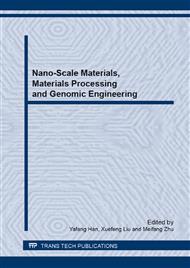p.560
p.566
p.574
p.580
p.587
p.593
p.599
p.603
p.608
Application of Dynamic Deadband Eccentricity Filter in GM-AGC System
Abstract:
The problem of roll eccentricity has become one of important factors to affect the quality of strips as downstream industries require improvement of the strip quality. Reducing thickness control precision as little as possible is incompatible with restraining roll eccentricity perturbations on the requirement of the deadband size for the deadband drift method (DDM) with fixed deadband width. Therefore, the GM-AGC system in hot finishing mill of an aluminum plant uses the dynamic deadband eccentricity filter (DDEF) whose deadband width varies with the amplitude of the roll eccentricity signal. The operating principle of DDEF was introduced according to the characteristic of roll eccentricity signal. Based on the theory of DDEF, simulation was carried out. Comparing with DDM, the simulation result shows that DDEF can keep a balance between less lowering thickness control precision and restraining roll eccentricity perturbations on the requirement of the deadband size. Moreover, the deadband width of DDEF is capable to fit the variations in the frequency and amplitude of the synthetic roll eccentricity signal to restrain the misoperation of GM-AGC system.
Info:
Periodical:
Pages:
587-592
Citation:
Online since:
April 2014
Authors:
Price:
Сopyright:
© 2014 Trans Tech Publications Ltd. All Rights Reserved
Share:
Citation:


